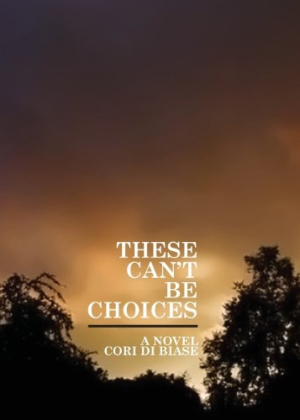These Can't Be Choices
Engaging dialogue propels this story forward and reveals character as well as mystery.
Reconciliation, redemption, and reparation are among the motifs Cori Cooper Di Biase threads throughout his debut novel, These Can’t Be Choices, but so unforgiving and unrelenting are his characters’ lives that they begin to resemble faded, worn tapestries—depleted by life experiences rather than enriched.
Ben, a forty-something mechanic, lives in Washington, DC, a surprising choice for the story’s setting since his chief goal—and not by choice—is to hide out in plain sight. Could there be a busier, more surveilled location than the United States capital?
The story is told from Ben’s point of view via flashbacks from his early life, his chaotic childhood, and the cruelties he endured at school, all of which is layered between narratives depicting his current situation. This back-and-forth technique, however, distracts and makes Ben appear even more off-kilter, perhaps, than Di Biase intended. And, instead of adding to the picture of what contributed to Ben’s horrific reality (which is kept under wraps until near the book’s end) the pile-on of flashbacks-within-flashbacks force the story into a stall—stuck in Ben’s head for a good part of the novel.
Intriguing characters, interesting scenes, and compelling dialogue all help bring the story to life, as when Di Biase shows Ben and his coworkers discussing a family’s murder from the previous night. Tony argues that someone who kills for no reason isn’t right from the start:
“That don’t happen to just anybody, you know? It’s only gonna happen to some dude who has something deep down wrong with him. Right from day one. The kind of dudes that do that are wrong from the start.’…
‘What? So you let him go?’
’Whattaya mean, let ‘em go? Who said I’m letting ‘em go?’…
‘Well, if they’ve got it so bad…If they can’t help it?…If you put me in a trance or mind control or some shit and I go out and rob you, you can’t come and convict me now, right?’
‘Why I’m gonna put a trance on you to make you rob me?’”
This cadenced conversation engages, and the dialogue advances the story when Ben reacts by steering the talk away from murder. The novel isn’t intended to be a mystery, so there’s no reason to stay silent on why Ben was imprisoned; this background has surely affected who he has become and what he’s seeking now.
From the get-go, there appears little chance of redemption for these characters, less reason to hope. They’re tired, worn out, willing to stay put. Even Ben says, about himself, “People saw him, but they didn’t. They didn’t look…They left him alone.” The writer’s choice of intertwining hopeless, despairing, and despondent people with the plot remains unexplained.
The paperback is a non-standard five-by-seven-inch book, its cover draped in a dark image that lends a sense of foreboding. The back cover copy is cryptic, mentioning Ben’s “impossible crime,” a curious but meaningless description for murder.
Di Biase’s writing does have an underlying energy that engages when allowed to breathe. At times, his prose sings: “He imagined what there would be if he could pull away the skin of the earth.”
These Can’t Be Choices may be the perfect read for those who don’t mind complex allegories or books whose characters won’t necessarily find redemption or a happily ever after.
Reviewed by
Chris Henning
Disclosure: This article is not an endorsement, but a review. The publisher of this book provided free copies of the book and paid a small fee to have their book reviewed by a professional reviewer. Foreword Reviews and Clarion Reviews make no guarantee that the publisher will receive a positive review. Foreword Magazine, Inc. is disclosing this in accordance with the Federal Trade Commission’s 16 CFR, Part 255.

